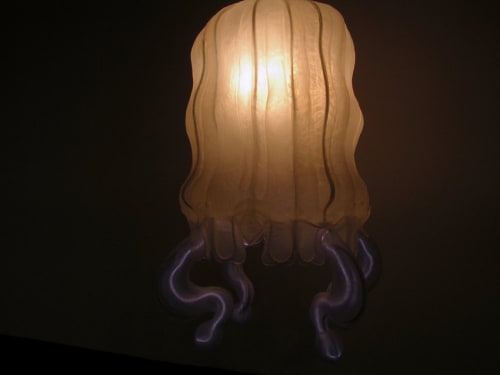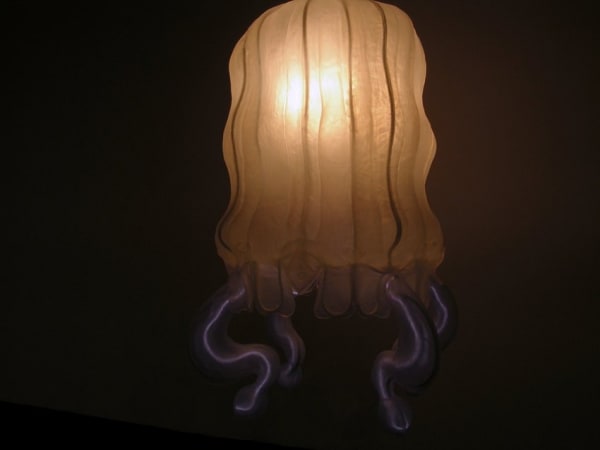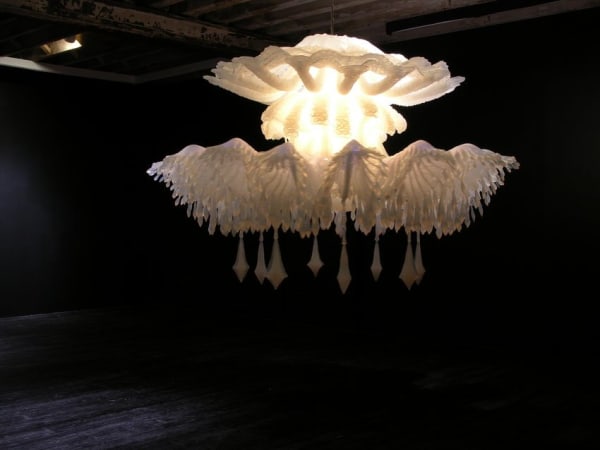Timothy Horn: Villa Medusa
New York Gallery
Australian Timothy Horn’s sculpture, informed by queer and feminist theories, reinterprets historical imagery and objects. Detail and craftsmanship seduce the viewer. Extensive research evidences itself in layers of references. Playful, satirical relationships form between his works and their audience. Horn’s first New York exhibition is comprised of three massive silicone chandeliers. They are based upon illustrations of jellyfish by 19th century German zoologist Ernst Haeckel, whose scientific theories and published images are questioned by scientists and historians for their accuracy, but remain influential because of their design and beauty. Haeckel incorporated stylized creatures into the architecture of his home, Villa Medusa. Horn references the architectural use of biological forms, traditional Venetian glassmaking, and the palace at Versailles in his sensuous hanging sculptures. Horn’s three works, Medusa, Stheno, and Euryale, borrow their names from the mythological Gorgon sisters, as does the Latin term for jellyfish, discomedusa. The myth involves themes of beauty, seduction, revenge, and death. Like jellyfish, which use bioluminescence to attract prey, Horn’s chandeliers seduce through form, tactility, translucence and horrible beauty. Ranging from four to ten feet in diameter, their scale goes beyond animal and human towards otherworldly.



